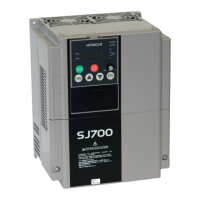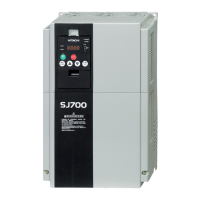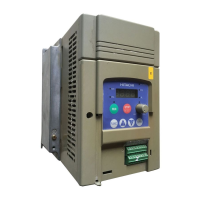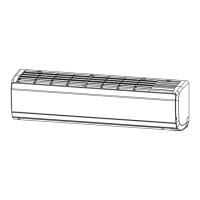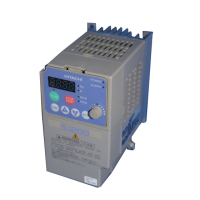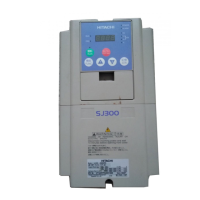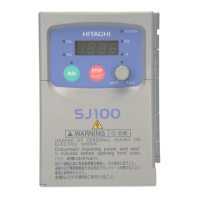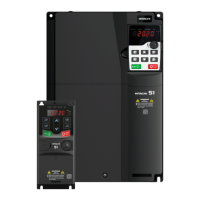Chapter 5 Error Codes
5 - 7
OP1-9
OP2-9
OP1-2
OP2-2
OP1-0
OP2-0
OP1-1
OP2-1
3) Error indications by protective functions with the DeviceNet option board (SJ-DN) mounted
Name Description
Display on
digital operator
Display on
remote operator
Troubleshooting and corrective action
Reference
page
DeviceNet
communicatio
n error
If the disconnection due to the Bus-Off
signal or timeout occurs during the
operation using DeviceNet commands,
the inverter will shut off its output and
display the error code shown on the right.
(The inverter will trip according to the
settings of "p45" and "P048".)
Check whether the communication speed
setting is correct.
Check whether the wiring distance is
appropriate.
Check the connections.
Duplicate
MAC ID
If two or more devices having the same
MAC ID are detected in the same
network, the inverter will display the error
code shown on the right.
Check whether duplicate MAC IDs are
used.
External trip
If the Force Fault/Trip bit of Attribute 17 in
the Instance 1 of the Control Supervisory
object is set to "1", the inverter will shut
off its output and display the error code
shown on the right.
Check whether the Attribute 17 in the
Instance 1 of Class 29 is "1". (If so, clear
the bit to "0".)
Inverter
communicatio
n error
If timeout occurs during the
communication between the inverter and
DeviceNet option board, the inverter will
shut off its output and display the error
code shown on the right.
Check whether the option board has been
disconnected from the inverter.
Refer to the
instruction
manual for
the SJ-DN.
Note: If the option board does not operate normally, confirm the DIP switch settings on the option board.
Functions of the DIP switches on the DeviceNet option board (SJ-DN)
Setting of DeviceNet baud rate (DIP switches No. 1 and No. 2)
Baud rate 125 kbps 250 kbps 500 kbps
DIP switch setting
Setting of MAC ID (DIP switches No. 3 to No. 8)
MAC ID Dip switch setting
The left-most switch indicates the highest-order bit of MAC ID. Therefore, the
example of switch settings shown on the left indicates the following MAC ID:
= 29 (hexadecimal) = 41 (decimal)
Note: For details, refer to the instruction manual for the option board.
↓
↓
ON
OFF
DR1 DRO
DR
↑↓
ON
OFF
DR1 DRO
DR
↓
↑
ON
OFF
DR1
DRO
DR
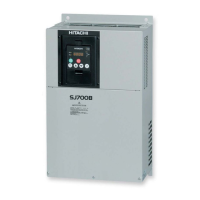
